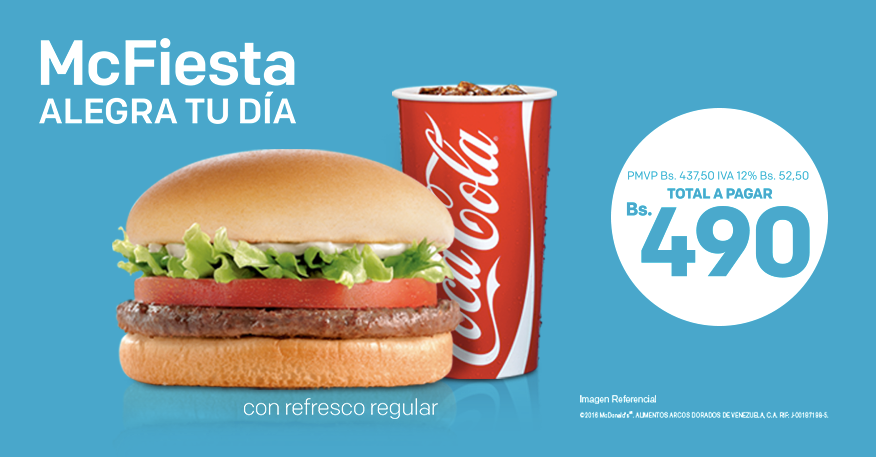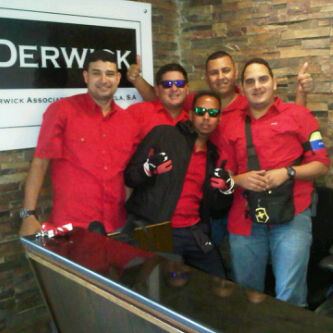Debt 2.0: Cadivi and the World's Most Profitable McFiesta
Venezuela's debt isn't just enormous, it's complex. Crazy exchange rates, interests, and enchufados saw CADIVI dig its own grave. How do we climb out?


What are we talking about when we discuss Venezuela’s foreign debt? Usually, we use the term used to refer to financial debt. That’s what DAUZ trades: bonds that either the State or PDVSA issued, and that have a prospectus under New York Law. Financial Debt is the kind of debt that, if you don’t pay it, the sky caves in. Credit Default Swaps kick in, creditors seize your assets, and the country’s ability to transact with the rest of the planet comes to a stop. We have about $122 billion in Financial Debt, and we talk about it endlessly here.
But that’s far from the whole story. There’s also “non-financial debt”: a continuum of more-or-less hard commitments that may or may not be actionable in court. There’s no solid data on this debt but we figure it’s about $40 billion: $9.2 billion in pending arbitration claims and $30.9 billion in “Commercial Debt”, according to an estimate released by Ecoanalitica in April.
That last bit is money we owe foreign suppliers and companies doing business in Venezuela. Economists like to call it Commercial Debt, though it’s maybe easier to think of it as Cadivi Debt. The thing to grasp is that it’s not like the Financial Debt; it’s Debt 2.0.
Remember Schlumberger, the oil field service contractor that said it was cutting back on the work it does for PDVSA because they never get paid on time?
Debt 2.0.
All the foreign companies that have sold a kilo of rice or a car battery or a seat on a plane to a Venezuelan client and are still waiting for Cadivi to send their greenbacks?
Debt 2.0.
Debt 2.0 comes in many flavours: unpaid imports, approved but undisbursed dividends, rents and services, and oil companies and PDVSA’s partners.
As of December 2014, we had $8.4 billion in unpaid imports, says Ecoanalitica. That includes goods that arrived in the country but never got paid for. The process involved three parties: the Venezuelan company, which had to pay its part in bolivars to the Central Bank; the foreign suppliers, who sold the goods; and the government, whose job is to take in the bolivars from the Venezuelan partner and pay out dollars to the foreign partner. In many cases everyone has already done their part except the government: the local partner already paid their bolivars, but the foreign partner is still waiting to get paid. That…well, under other circumstances you’d call that ‘fraud’ wouldn’t you?
Then – again going by the older, December 2014 Ecoanalítica numbers – there was at least $4.2 billion in undisbursed dividends. That’s profits foreign companies have made in bolivars, and have then asked to turn into dollars at the official rate – the whole point of foreign investment. The government said “yeah, sure”, but hasn’t disbursed the foreign currency, and the companies haven’t handed the bolivars to the government. Because most multinational company executives are sane, the bulk of this money is not held in bolivars. Companies have used different strategies to preserve the value of their profits like buying up real estate, buying local competitors or reinvesting the funds in machinery (when possible).
The rents and services debt include airline tickets, phone calls, and non-tangible imports. Back at the end of 2014, there were $5.9 billion in that category, and that’s the reason you can no longer make a phone call to Spain or Panama or buy an international airline ticket in bolivars.
Finally, at end-2014 we owed $4.9 billion to PDVSA’s suppliers: the whole constellation of service companies who keep the oil industry from collapsing altogether.
What are we supposed to do with this mountain of ambiguous debt?
That’ll be one of the most contentious questions any new government has to deal with. Because unlike with Financial Debt – where what’s legal, moral and financially astute all somewhat line up (pay up!) – the shoulds and musts are all a bit hazy when it comes to Debt 2.0.
One extreme option would be to say “debt is debt, we better pay everything at full value, at the official exchange rate at the time the debt was contracted.”
Setting aside the question of fiscal viability, is this a sensible thing to do?
Maybe not. Take the McDonald’s McFiesta fry-less combo, just Bs.490.

Say Bs.390 of that are costs, Bs.100 is profit.
Are we really ok with saying Cadivi should pay out ten bucks to McDonald’s for profits for this meal?!
It’s a burger and a coke!!
No me jodas, Ronald!
That’s a trivial example, but it illustrates a broader point: the dollar value of Commercial Debt for dividends at official exchange rates is crazy and unrealistic.
On the other hand, Ronald could also turn around and, not unreasonably, say “yes, that’s a lot of dollars, but why do you think we stuck it out in this crazy country for all these years? Precisely because the crazy policy framework legally held out that possibility.”
See how this stuff’s kind of ambiguous?
Perhaps the McFiesta example is a bit misleading. After all, at the very least here an actual hamburger is involved, and a drink, too. Somebody went into that interaction hungry and left sated. Value was transacted.
The place where the Commercial Debt gets really hairy is when you ask yourself how much of it is owed to the likes of:
Make no mistake about it, while much of the Commercial Debt is owed to real companies that took risks to do business in Venezuela, a good chunk of it is owed to enchufados: guys who thought they had a connect at Cadivi, or at Bariven, who would be good for the dollars, and then got stiffed. Guys who over invoiced, importing 10 kg. of rice and getting CADIVI approvals for 100. Guys who defrauded the State, getting dollars in return for nothing, or left food to rot under the Puerto Cabello sun because they had already made a 3000% profit without needing to sell a damn thing.
The whole rotten panoply of Chávez era import corruption is well represented in the Commercial Debt bill. If your stomach is turned by the thought of an eventual MUD-led government taking dollars we don’t have and devoting it to paying off those fuckers… you’re not alone.
How do you separate legitimate imports from the enchufados and bolichicos? At some point a commission may, and should, be formed to look into these debts. It should be able to identify obvious cases of fake imports or over-invoicing, especially in public imports and contracts. They can recheck whether the foreign supplier is a shell company (for example, its owners are the same as those of the importing company,) or that’s it’s owned by Venezuelan government employees or their proxies – typical markers of import fraud. But the number of transactions is so large, and the tricks so many, there’s no foolproof way to distinguish proper imports from fraud. There’s no way to check on imports and transactions where the goods involved – if there were any – have long been consumed, and the paperwork looks in order.
So what to do? Well, there’s a precedent, since it’s not the first time the country has run up a suspicious bill under exchange controls. After the end of RECADI – the 80’s, Lusinchi version of CADIVI – the country was left with a large bill of unpaid imports. The policy dilemma looked uncannily like the one we have today. What did they do?
In 1990 the Central Bank issued $3.5 billion in dollar-denominated bonds, and handed them to foreign suppliers to cover RECADI obligations. (Here, we even have the Gaceta for you from all the way back then.) They issued them 20-year bonds with a 4% coupon to cover the principal, and 8-year zero-coupon bonds to cover the interest. Both could be sold in the secondary markets after one year. Since the same unrealistic exchange-rate math and suspicions applied to the RECADI debt as it does to CADIVI’s, the bonds implied a big haircut. For debts of less than $10 million, 35% was repaid, and for debts over that amount, 65% was repaid, while interests took a 30% haircut. Payments for debts under investigation were delayed.
We need not do it exactly that way, but the 1990 example provides a blueprint for how you settle the unpaid imports part: after checking for fraud cases, you apply a large haircut to all remaining debts and let the just pay for the sinners. Messy, but effective.
But that’s for the unpaid imports portion of the debt. The approved dividend part is trickier. Why? Because for unpaid imports, many Venezuelan importers already handed their bolivars. The issue now is purely between the foreign supplier and the State. You can’t ask the Venezuelan importer to pay again for something it paid for years ago already. But with the dividends, the companies kept their bolivars and likely managed to protect them from inflation, and for this reason their claim is weaker.
Say Telefónica had Bs 6.3 million in profits two years ago, and was approved $1 million at 6.3 $/Bs by the government. To protect its value, it bought office space that it can sell today for Bs 500 million, thanks to inflation. Should the country honor its commitment to let them buy $1 million for Bs 6.3 million? Or should it tell them “No way. Sell the office space, go to the new free exchange market, and buy yourself $1 million for Bs 500 million”? There’s then a compelling argument for not recognizing these commitments, and telling the companies to exchange their bolivars at a new weaker exchange rate.
The debt for rents and services can also be solved using a mix of those options: haircuts, and the free market. As for the PDVSA debt, while it’s obviously crucial, it might also be the easiest one to handle: pay with oil. With PDVSA under a new, more responsible administration, creditors might be more inclined to accept payment-in-kind to keep working for PDVSA, or agree to receive partial ownership in joint-ventures with the company as payment.
All of these arrangements will likely bring about lots of legal challenges, both at home and abroad. Knowing how long our courts take for, well, anything, foreign suppliers receiving partial payments might be better off accepting whatever the government offers that waiting who knows how many years mired in our courts.
In the end, the problem is complicated, sure, pero tampoco tanto: any foreign supplier who extended credit to Venezuelan companies was taking a risk. But then, that’s a feature of all credit everywhere. Every credit is a roll of the dice, and in Venezuela they all rolled snake eyes. But whatever the solution, the country should strive to pay at least a good number of the legitimate creditors, even if only very late and after a large deduction. Defaulting on the whole of these debts will result in Venezuelan companies being shut out of international credit for a long time. That’s no way to climb out of the hole we are in.
Caracas Chronicles is 100% reader-supported.
We’ve been able to hang on for 22 years in one of the craziest media landscapes in the world. We’ve seen different media outlets in Venezuela (and abroad) closing shop, something we’re looking to avoid at all costs. Your collaboration goes a long way in helping us weather the storm.
Donate





